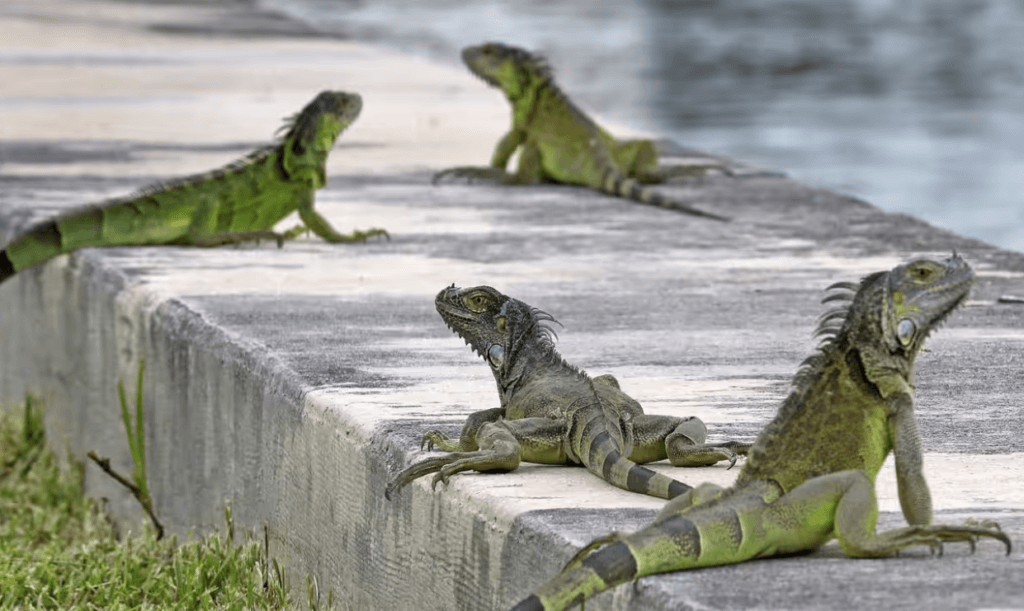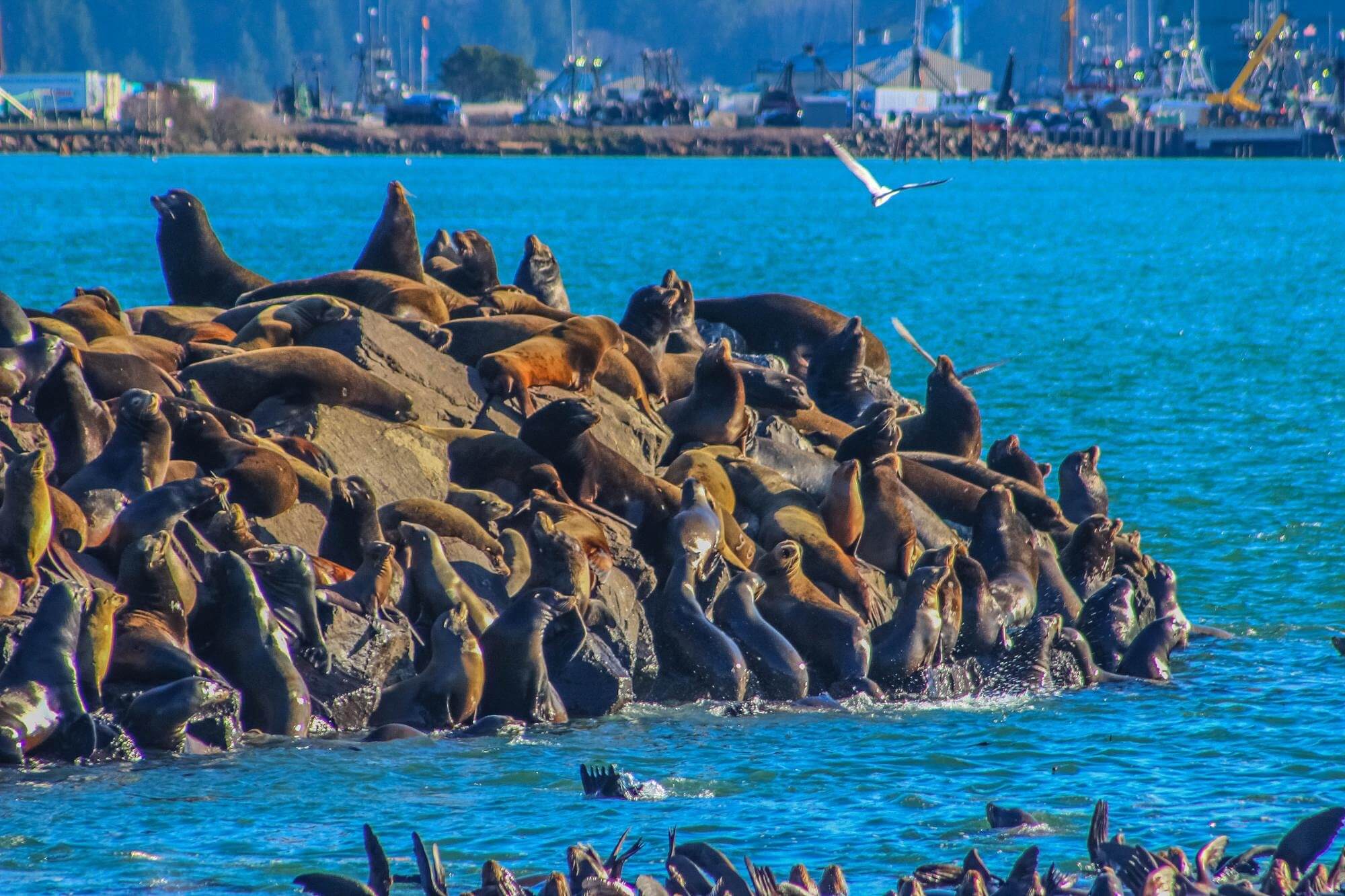Florida is a haven for lizards due to its humid and warm climate. Some find them creepy, others find them cute – whichever side of the fence you’re on, it’s a fact that lizards are very important to our ecosystems, and while in Florida, you’ll have 15 native lizard species to try and spot, alongside a much larger variety of “exotic,” or invasive, species.
Where Can I Find Lizards In Florida?
The lizards that are native to Florida choose hot, dry scrubland or pine woodland to make their homes in. The invasive species of lizards can be found everywhere throughout the state and in some cases are outcompeting the native species.
Are Florida Lizards Dangerous?
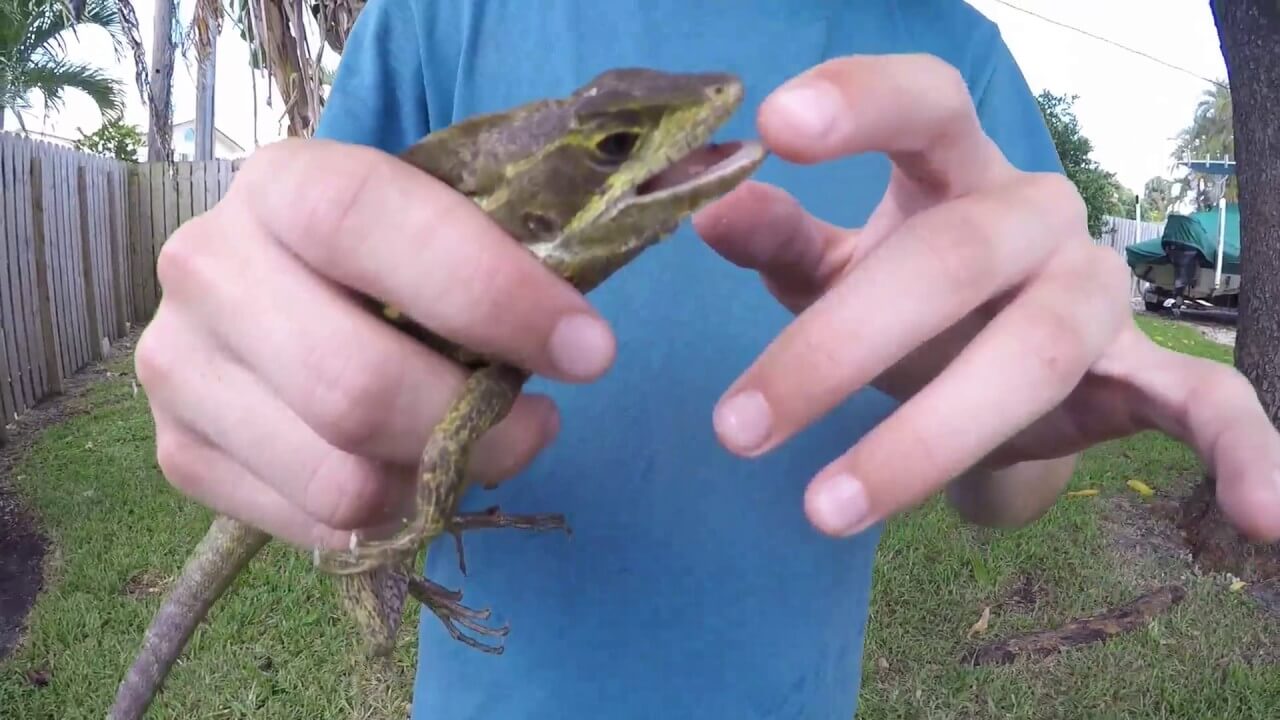
Most lizards in Florida are not considered dangerous and are more likely to run away than attack – which the larger ones may well do if backed into a corner. The only two venomous species there – the Gila Monster and the Beaded Lizard – are slow movers but fierce biters, whose venom can cause serious health issues in humans but which is very rarely fatal (no fatalities reported since 1930!). If you are bitten and the skin is broken, gently clean the wound with warm water and soap, and seek immediate medical attention. Those lizards (the majority) which are not venomous may in any case have harmful bacteria in their mouths that can cause an infection. Any wild animal you get bitten by carries the same risk, so avoid contact and, if you get bitten, go see a doctor just to be safe.
Note: Gila Monsters and Beaded Lizards don’t tend to let go easily when they bite – they clamp on and chew, grinding the venom into their victim. Symptoms of this venom can include pain, swelling, weakness, sweating, headache, thirst and ringing in the ears. In severe cases, your blood pressure might fall. YouTuber and wildlife educator Coyote Peterson famously described the bite as “like hot lava coursing through your veins” and claimed it was “the worst pain [he] had ever experienced.” If they’re not letting go, try forcing the jaws open with pliers or a stick, applying a flame under the lizard’s chin, or immersing the lizard in cold water. Once free, go straight to a doctor. There is no anti-venom (nor will one be needed), but your wound may have tooth fragments in it and will need cleaning.
How Are Lizards Good For Us?
Most lizards are a pleasure to watch – their cute scurrying, lazy lunching and funny mating dances can be both exciting and heart-warming. But whatever their size or diet, the fact is that they benefit our ecosystems and are a vital part of the food chain, first of all because they help control pests in agricultural fields and in yards, which makes them good friends to both property owners and farmers, second (and here we’re talking about the smaller lizards) because they are important prey for larger predators like snakes, which in turn help to control rodent populations – the great circle of life!
Can I Feed Them?
While it’s never advisable to get in the way of nature or teach a wild creature to be dependent on humans for food, there’s nothing wrong with leaving your new yard buddies a few tasty treats from time to time.
What Is A Florida Lizard’s Favorite Food?
As we said above, there are numerous species of lizard found in the rich biodiversity of Florida’s ecosystem. These fall into four main categories when it comes to their choice of menu: Herbivores only eat plant matter, insectivores only eat insects, omnivores eat both plant matter and insects or animals, and carnivores eat animals and eggs.
Insectivores, omnivores and carnivores are predators to crickets, cockroaches (high in moisture, calcium, fiber and protein), beetles, flies, moths, ants, spiders, snails, centipedes, millipedes and caterpillars. The bigger species of Florida lizards will happily chow down on the following if they find / catch them: Rabbits, mice, turtles, fish, birds, domestic animals (watch out for your cats and dogs!), squirrels, frogs and even other lizards! They will also eat any eggs they come across- from fish eggs to birds’ eggs.
The omnivores’ and herbivores’ diet includes fruits and vegetables, and they are particularly fond of fresh young kudzu and fruit tree leaves and sword ferns. Carnivorous and insectivorous lizards will not eat fruit even if you offer it to them.
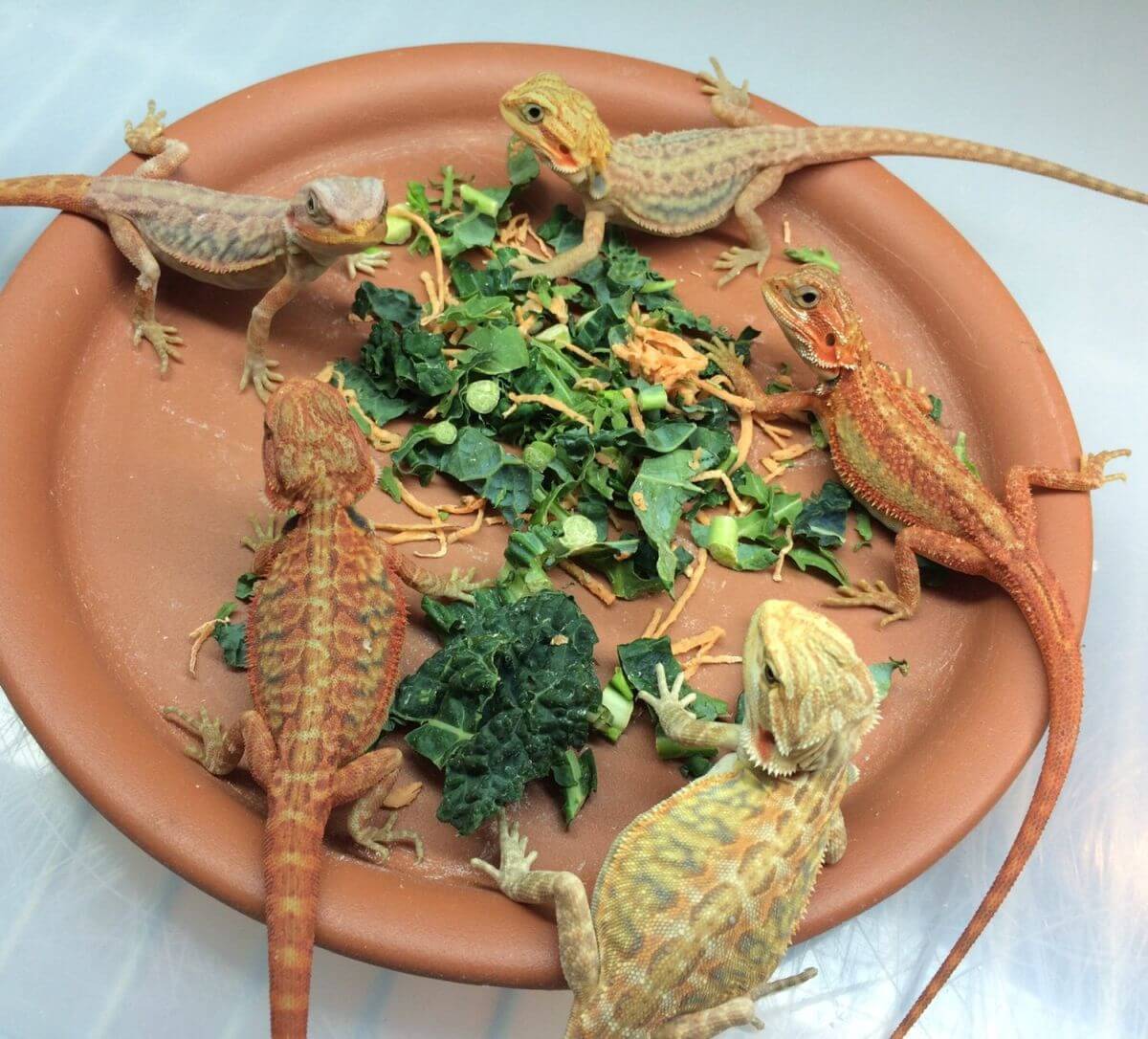
Note that some fruits and vegetables are better for lizards than others, and some can even be toxic to them. If you see lizards nearby, you can safely try to treat them to the following chopped goodies:
| FRUITS | VEGETABLES |
| Apple (NOT seeds – these are toxic to lizards!) | Dark green lettuce (not iceberg – it has zero nutritional value) |
| Banana | Collard greens |
| Strawberry | Turnip leaves |
| Blueberry | Shredded yellow squash |
| Melon | Shredded celery |
| Grapes | Bell pepper |
| Kiwi | Shredded carrot |
| Pear | Yam |
| Fig | Dandelion greens |
| Peach | Tomato |
Be sure to wash all fruits well and chop them up into bite-sized pieces before feeding them to a lizard. Throw away hard seeds, pits and peel. Don’t feed lizards anything that is moldy.
Never feed lizards insects you caught in the wild, or unwashed fruits and vegetables – wild-caught insects might be carrying harmful parasites, while fruits and vegetables might have been covered in pesticides and other harmful chemicals that can make the lizard sick.
What Are The Most Common Florida Lizards?
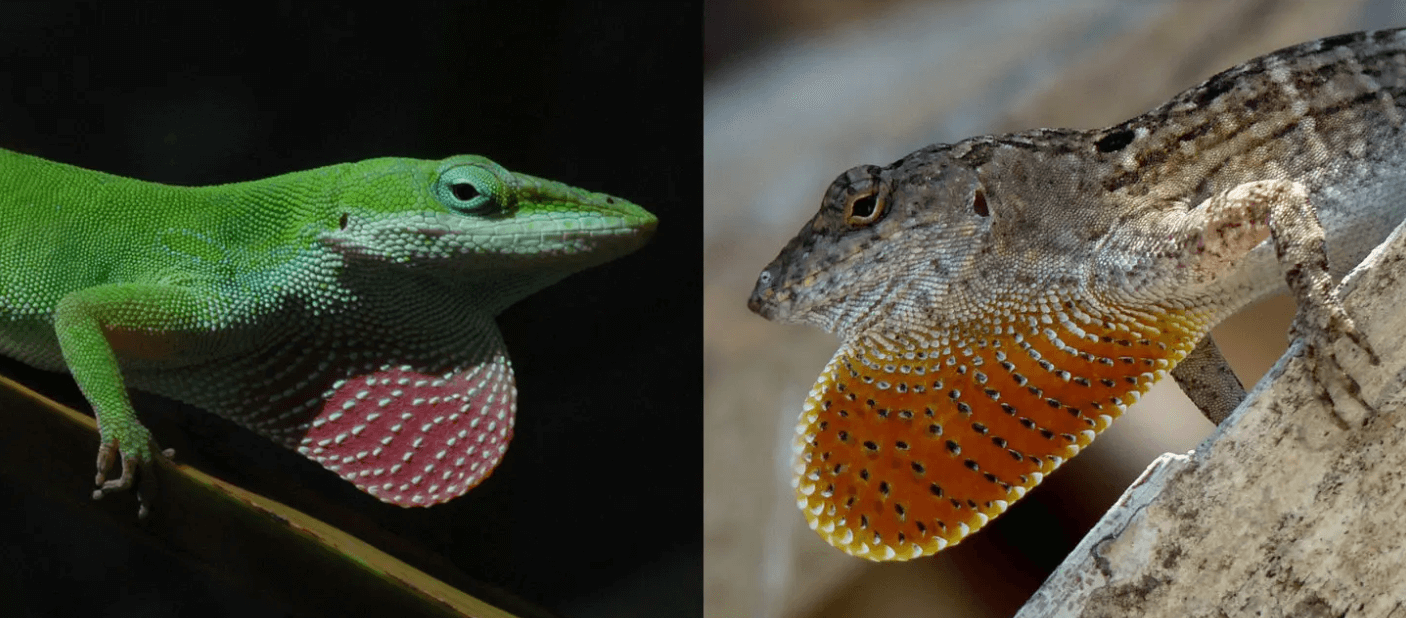
The lizards most often seen throughout Florida are the Green and Brown anole, which grow to up to 18 inches and can live to 7 years in the wild. The Green Anole is native to Florida and is in competition for habitat and resources with the invasive Brown Anole – the latter being the faster to reproduce and having a tendency to eat young Green anoles. The Green Anole has adapted somewhat by moving up into the higher levels of their shared habitat, leaving the browns the lower level insects while grabbing what lands in the trees for themselves. The Brown Anole was introduced to Florida around 100 years ago from Cuba, the Cayman Islands, and the Bahamas, and it is now the most common lizard in many developed areas of Florida.
People enjoy watching the unique anole dance the males perform in mating season, seeing them extend a pink throat fan (the dewlap) to wow the ladies. They also use this dewlap to warn off invaders to their territories. INTERESTING FACT: Green anoles can change from green to brown depending on the season, their mood and their health.
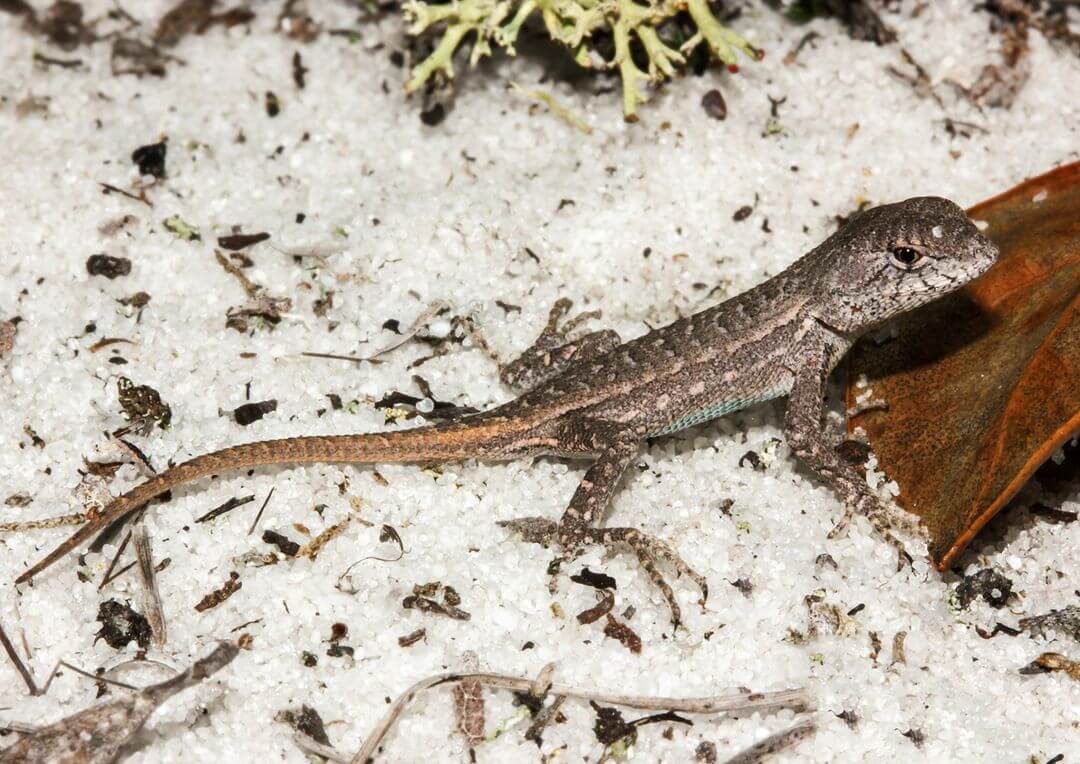
Another common lizard found in very dry, sandy habitats and woodland in the state is the aptly named insectivorous Florida Scrub Lizard, which averages 5 inches as an adult. Take a careful look next time you see a downed tree trunk – they’re hard to spot! These lizards feed on insects and spiders – free pest control!
INTERESTING FACT: The Florida Scrub Lizard has sharp claws which they use for climbing to avoid predators.
How Did The Invasive Species End Up In Florida?

State wildlife records claim the “invasion” started in 1928. Many invasive species of lizards were introduced to the wilds of Florida through the pet trade, seeing owners releasing enough lizards that in some areas they were able to form breeding populations that have since become a permanent part of Florida’s landscape.
Which Are The Biggest Lizards In Florida?
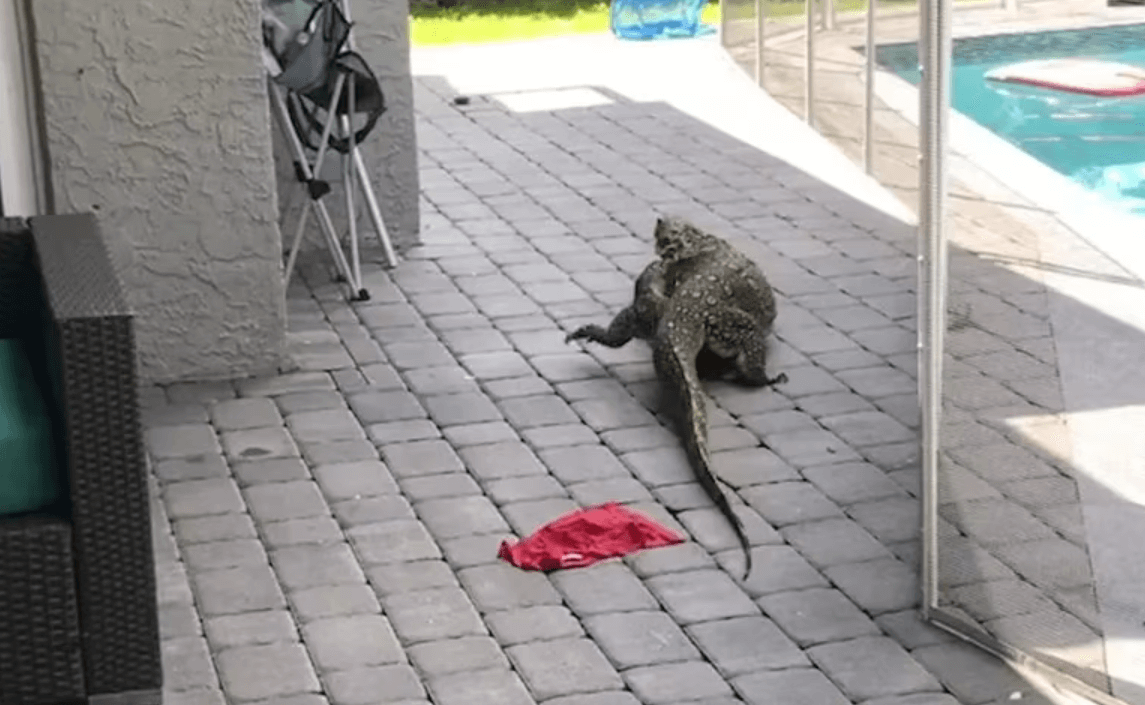
Green Iguanas can grow up to 5 feet (though are herbivores, meaning they won’t be attacking your precious fur baby!), while Nile Monitors average 6.5 feet and WILL eat your pets, as well as any other living, breathing creature they can get their jaws around. The slightly safer omnivorous Argentine Black and White Tegu grows up to 5 feet.
How To Report Big Lizards
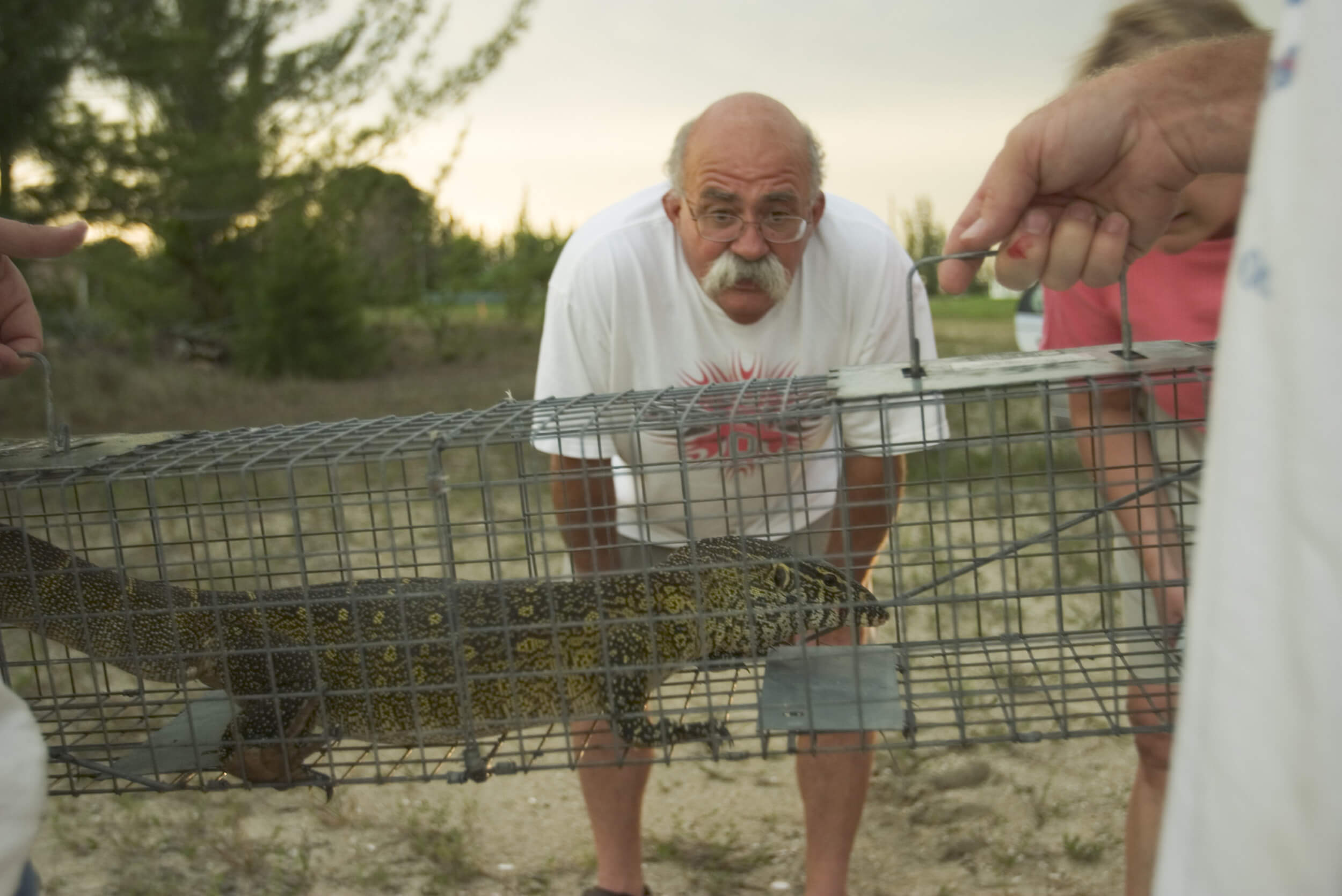
Tegus and Monitors love eating eggs, which makes them a threat to ground-nesting birds and reptiles, including threatened and endangered species like the American crocodile, shorebirds, burrowing owls, and sea turtles. Green Iguanas, meanwhile, are considered a pest in suburban areas not only due to the harm they bring to native plants and animals, but the damage they cause to seawalls and levees which they burrow into and under. As such, people are encouraged to report sightings so these lizards can be removed.
To report sightings:
- Take a photo
- Note the location
- Call 888-IVE-GOT-1 or report online at Ivegot1.org
Let’s find out more about these and some other interesting species of lizard living in Florida.
More On Florida’s Exotic (Invasive) Lizards
Gila Monster
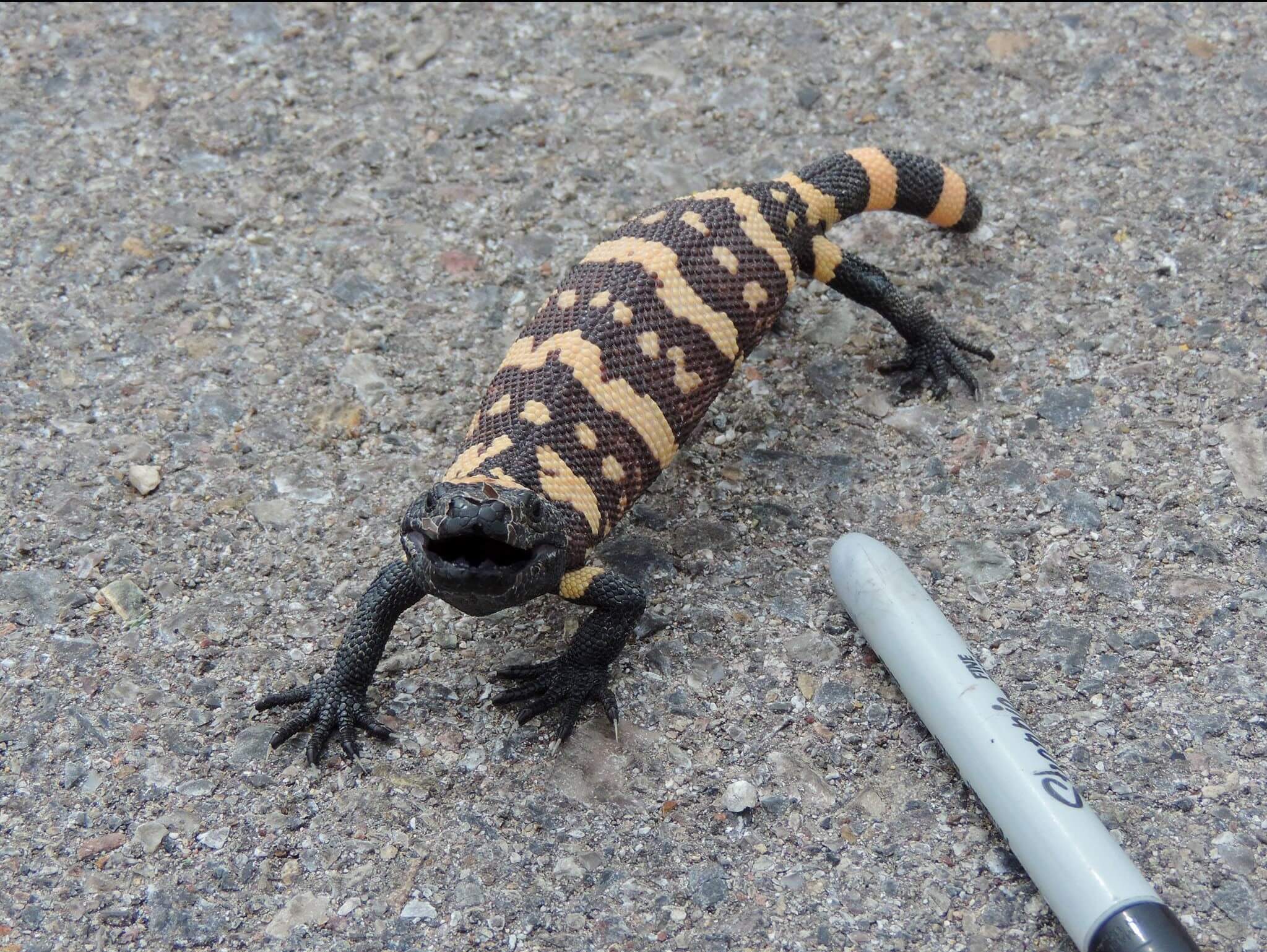
Pronounced “heela,” this is a lizard excessively feared in folklore and originating from Mexico. It has venom in its lower jaw which it grinds into its prey’s skin when it bites – and when it bites, it won’t let go without a fight (but before it attacks, it will hiss – giving you time to back away!). At full-length it is one and a quarter feet, with beaded skin and a short, fat tail. These carnivores can live for up to 20 years in the wild. Gila monsters have an awkward walk but are great climbers. They can’t see well and so use their tongue to sense prey before slowly sneaking up on them. On the Gila Monster’s preferred menu are birds’ eggs, baby birds, rodents, frogs, insects, centipedes, lizards and worms.
Beaded Lizard
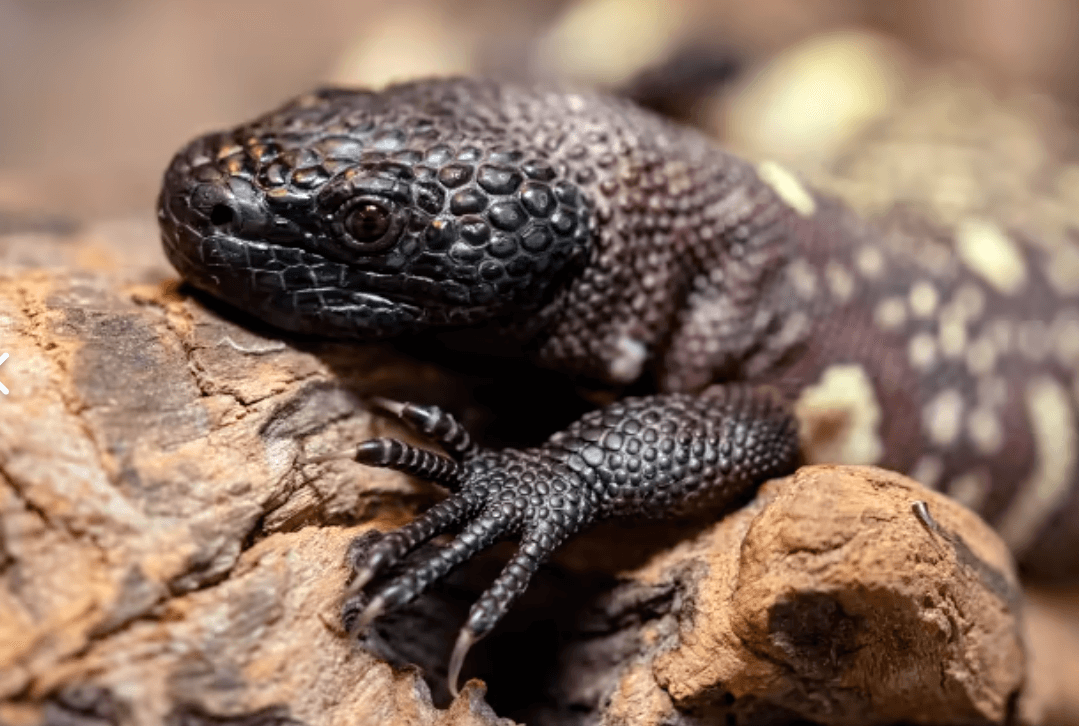
Another native of Mexico, Florida’s second venomous carnivore is the Beaded Lizard, which can grow to nearly 3 feet and has wonderful dark, beaded skin. They like to come out at night to dine on eggs, chicks and small mammals and, like the Gila, can live up to 20 years in the wild. Their bite is similar to that of the Gila and should be treated by a doctor.
Green Iguana
Florida’s giant Green Iguanas are not only big, but they are true survivors – breeding so well that the state has made it illegal to own one as a pet! Native to Central and South America, today they can be found in Florida’s rivers and lakes – wherever there are trees or seawalls to climb.
Iguanas don’t eat meat but in any case can cause a scare when seen swimming up a creek or running across the golf course!
While most lizards have a good role to play in that circle of life we mentioned, there are so many Green Iguanas (and other species of Iguana – the Black Spiny-Tailed and Mexican Spiny-Tailed) living in Florida, it’s actually started to harm the ecosystem – while Green iguanas prefer to eat fruits and vegetation, Spiny-Tailed iguanas tend to be omnivorous, posing an immediate threat to native wildlife.
The iguana population is high in the Lee County area and have been spotted in retention ponds in Fort Myers, at golf courses in Cape Coral and on the banks of the Estero River.
Nile Monitor
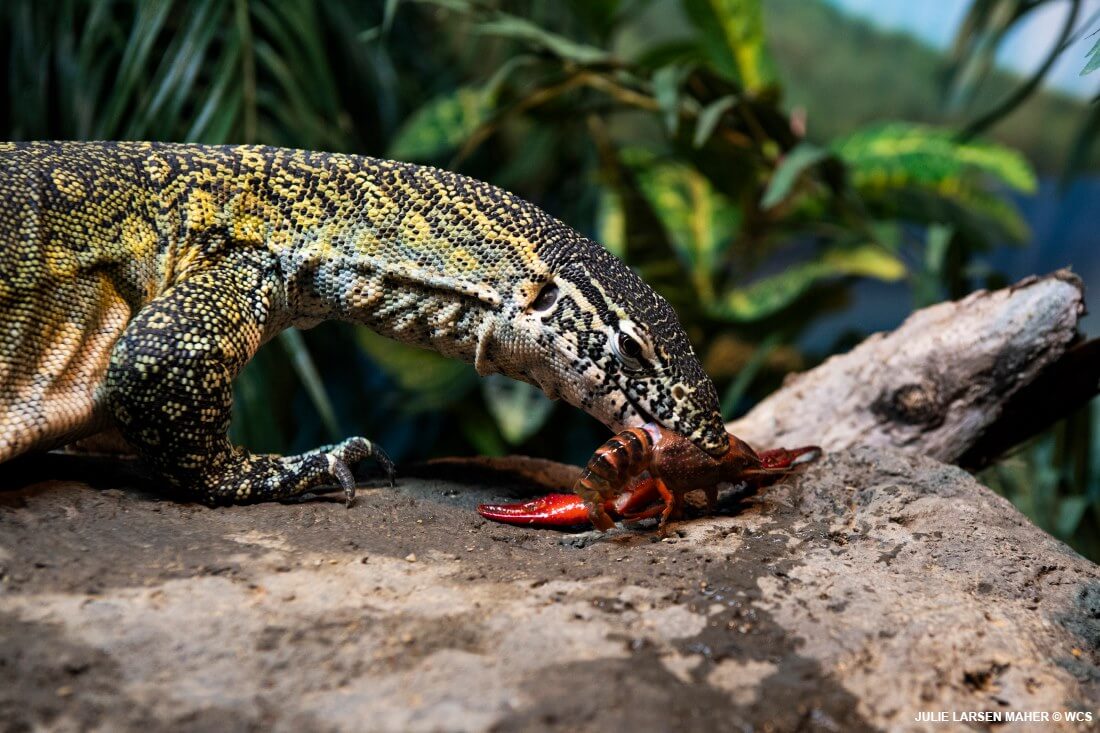
First documented in the Florida wild in 1981, Nile monitors are big, strong and aggressive lizards, and they will not hesitate to attack you if provoked. And with a full-grown length of 6.5 feet and weight of up to 18 pounds, they can fairly compete with some of Florida’s alligators! Coming with appetites to match their size, monitors are carnivores, and enjoy chowing down on birds, mammals, crabs, lizards, amphibians, turtles, eggs, and anything else that walks, slithers or flutters by! Added to this is the fact they are great climbers and can stay underwater for up to 15 minutes.
The Florida Fish and Wildlife Conservation Commission (FWC) says monitor lizards have established themselves in Lee County on the southwest coast and in Palm Beach, between Lake Okeechobee and the Atlantic Ocean.
Argentine Black And White Tegu
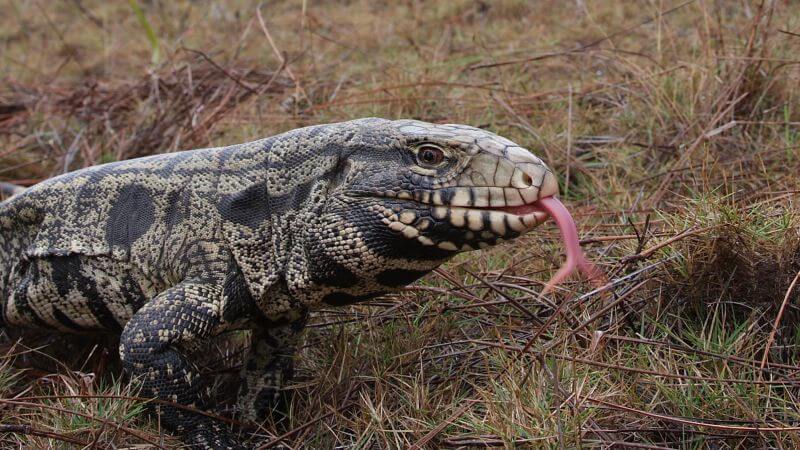
Up to 5 feet when fully grown, the Argentine Black and White Tegu are popular as pets for their affectionate and attentive nature, which is how they ended up in the Florida wild (first documented in 2002) – introduced there by the owners they outgrew. They are now officially classed as a nuisance and danger to the local wildlife and ecosystem.
These lizards are omnivores, enjoying bird and reptile eggs, rodents, and other small mammals, lizards, and even fruit. Native to the rain forests and deserts of Central and South America, Argentine Black and White Tegu are today prevalent in Southwest Florida and in the Hillsborough and Miami-Dade counties.
Oustalet’s (Or Malagasy) Giant Chameleon
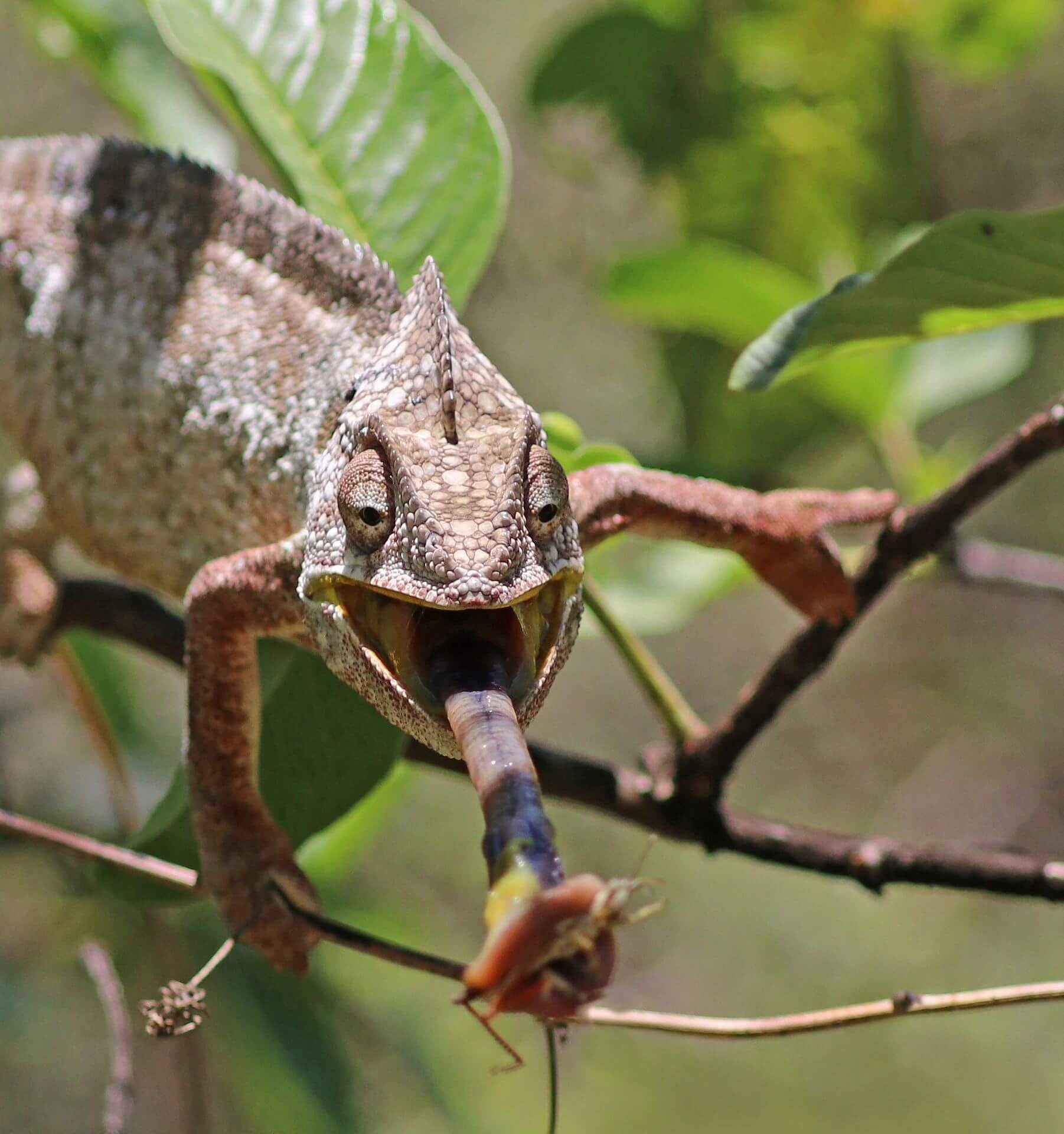
Endemic to Madagascar, the Oustalet’s Giant Chameleon can today be spotted throughout Florida sitting in fruit trees and shrubs hunting insects or chewing on the shrubs themselves. It’s one of the biggest species of chameleon in the world at 27 inches and it is a slow mover, happy to sit and wait for its insect lunch to happen along. When it does, the chameleon shoots out its extremely long, suction-cup-tipped tongue and grabs its meal-to-be. Interestingly, this lizard has a third eye on top of its head, although experts say this functions more like a light-meter than something it can see by. And yes, it can change color depending on mood or surroundings.
Six-Lined Racerunner
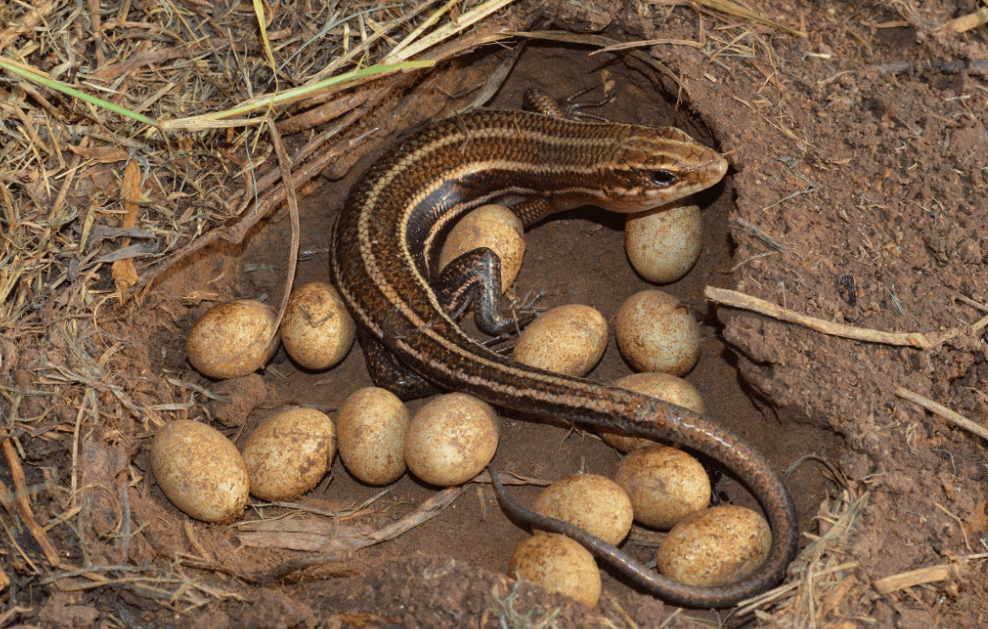
The Six-Lined Racerunner, a native of Mexico, is a baby in comparison with the giants above, but still an impressive 8 inches on average. They have six thin, pale lines running down the length of their bodies and have a velvety brown – dark green coloring. Six-Lined Racerunners are insectivores who eat grasshoppers, crickets, and roaches, and you’ll most likely see them on the ground in hot, open areas such as fields, the edges of woodland, and sand dunes.
Mediterranean House Gecko
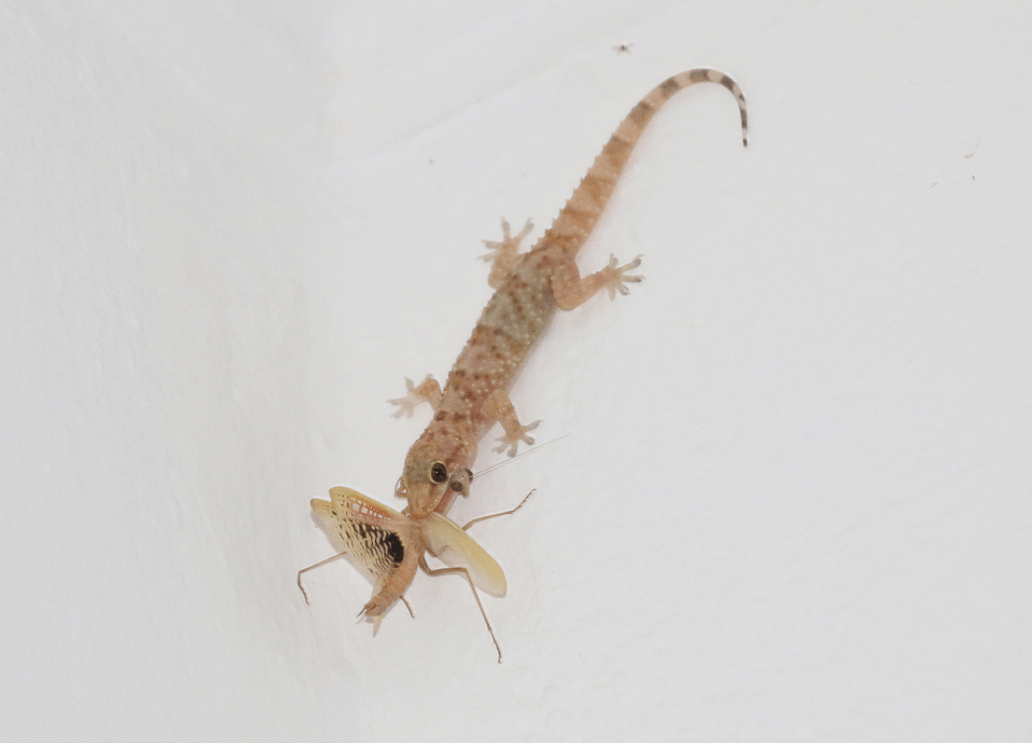
The gentle, 5 inch long Mediterranean House Gecko came over from Cyprus, Turkey, and Spain. They will only come out at night, which is when they know the easiest meals are available, thanks to us humans. These lizards, when hungry, go and sit near an outdoor light fixture. All they have to do is wait and the moths and beetles come to them. Easy pickings!
Eastern Fence Lizard
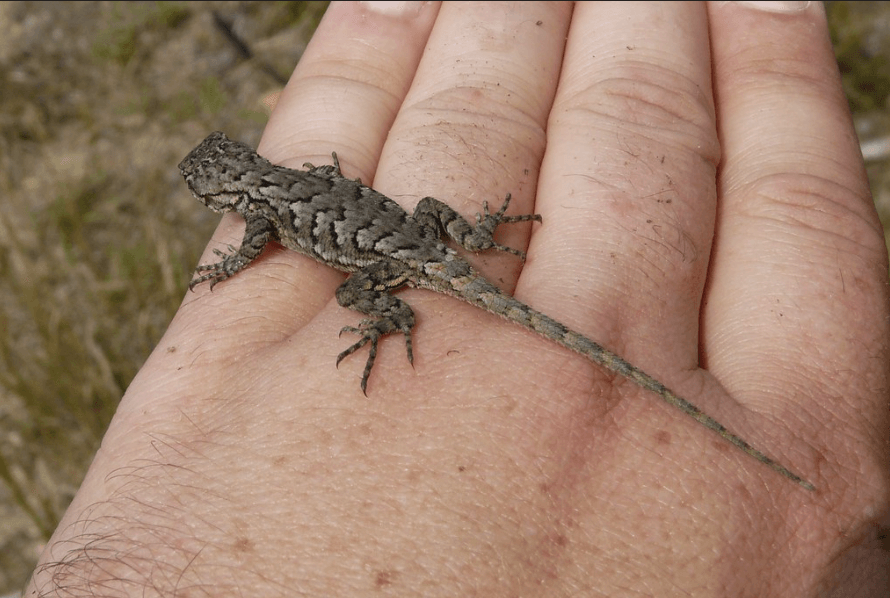
The Eastern Fence Lizard, like the native Florida Scrub Lizard, measures in at around 5 inches when fully grown, with their tails making up over 60% of their total body length. Also like their scrubland cousins, you’ll find them in forests, and hiding from the sun in rotting logs, rocks or tree stumps. Keep an eye out for them early morning before the earth has been warmed by the sun. They are insectivores who like to sit and wait for food to happen by.
Peter’s Rock Agama
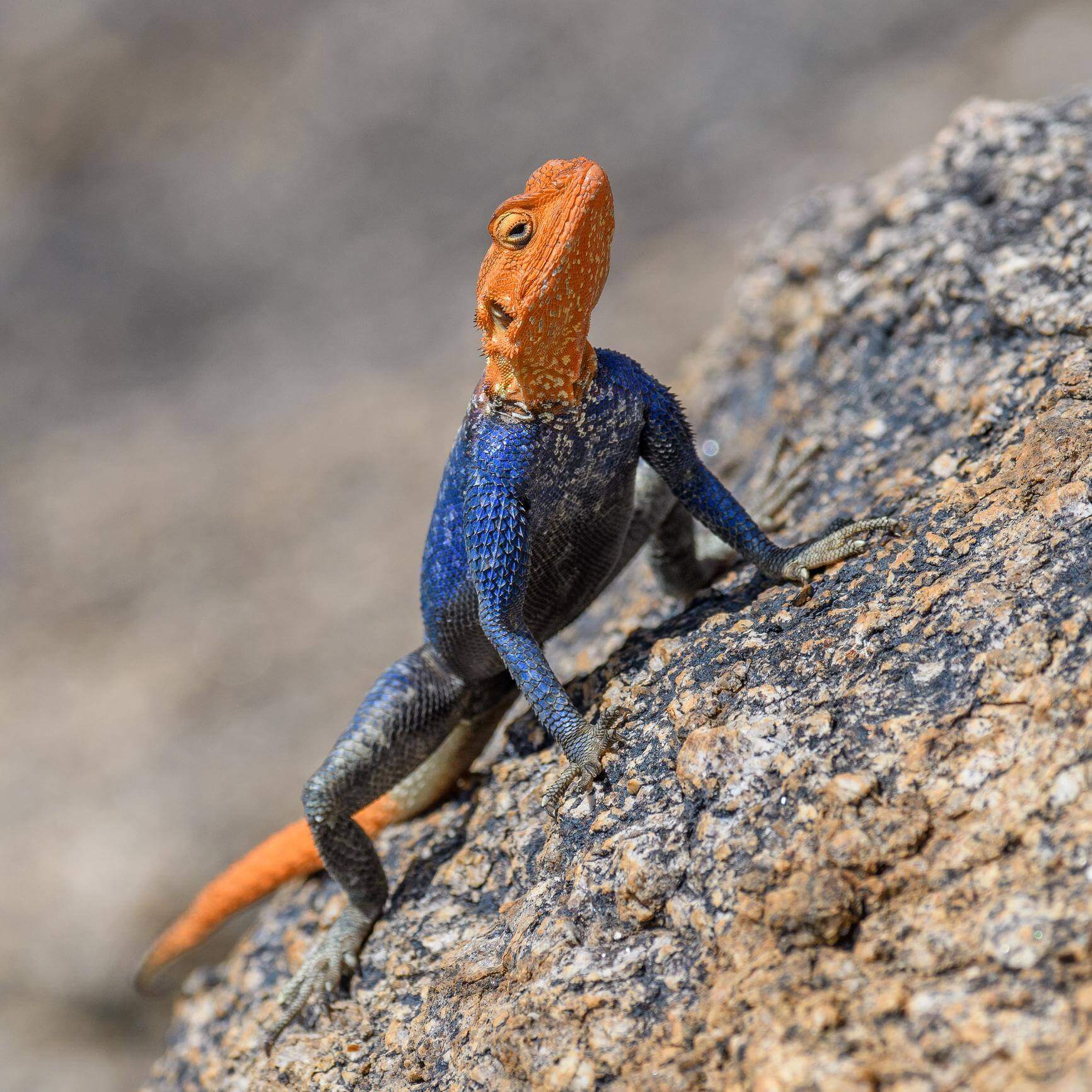
The orange-headed Peter’s Rock agamas are easy to spot but are fast on their feet. Adults measure 8 – 10 inches long and, like the gecko, are “sit-and-wait” insect predators, feeding on ants, spiders, beetles, grasshoppers and crickets.
Native to sub-Saharan Africa, they were first documented in Florida in 1976, thought to have been brought there by the pet trade decades ago.
These lizards like it humid, and are populous throughout the historic Everglades.
Brown Basilisks
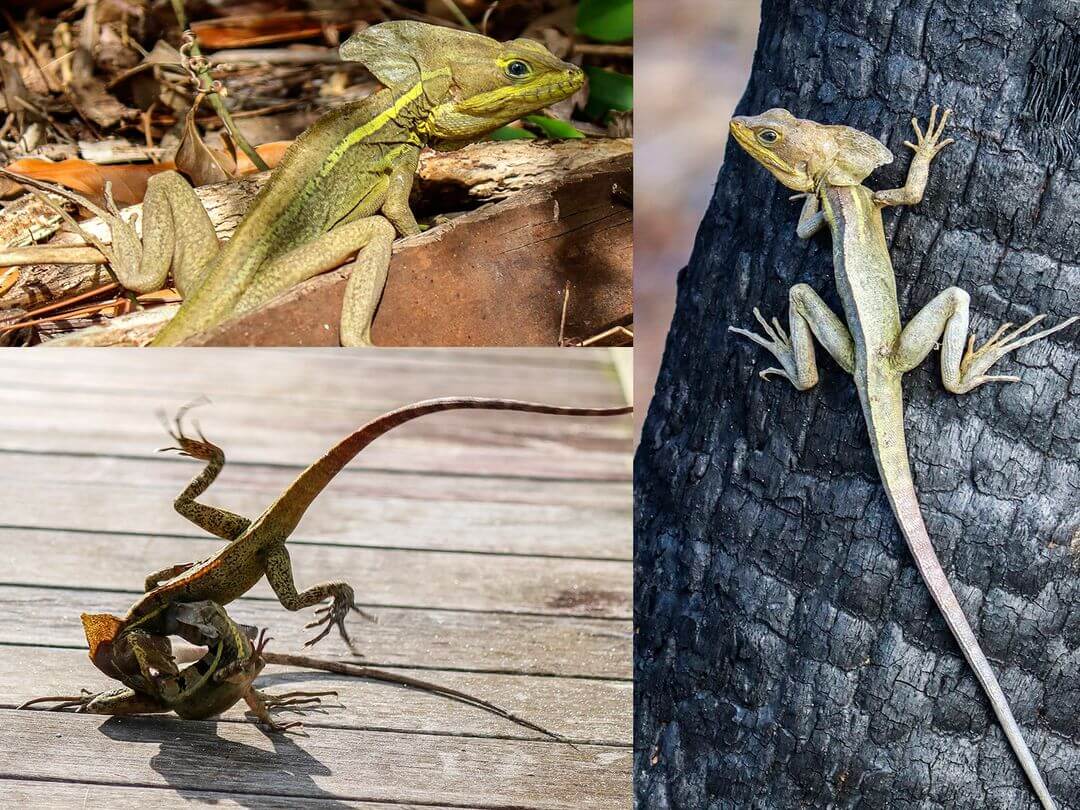
Known widely as “the Jesus lizard” for their ability to walk across water, the Brown Basilisk was brought to Florida from tropical Mexico prior to the 1970s. Omnivores, they live on a diet of grasshoppers, spiders, worms and fallen fruit.
Frequently Asked Questions
No. There is no such thing as a “Florida lizard,” just lizards who live in Florida (and a lot of them at that!)
Yes. The small lizards there lap at the droplets of dew that form on leaves and their own bodies. They also get a lot of moisture from their food. Bigger species drink from bodies of water much like mammals do.
The most common lizard in Florida is the Brown Anole, which arrived there over 100 years ago from the Caribbean.
The majority of lizards in Florida are not dangerous. Only two lizards in Florida are venomous – the Gila Monster and the Beaded Lizard, while the Nile Monitor may eat your pets but will usually only attack you in defense.
Florida’s biggest lizards – the Nile Monitor, Green Iguana and Argentine Black and White Tegu, each 5-6 feet long as adults, are typically found in Southern Florida.
There are many different species of lizard in Florida. Herbivores only eat plant matter, insectivores only eat insects, omnivores eat both plant matter and insects or animals, and carnivores eat animals and eggs.
In the wild, a lizard can live 5-20 years depending on the species.
Disclaimer
While we at Traxplorio do our very best to give you the most up-to-date information, we always recommend you do your own research before you travel to a particular area, and check conditions with official sites. Thanks for understanding, and enjoy your adventure!

